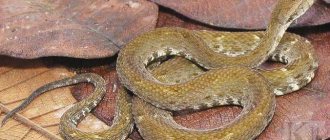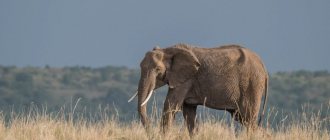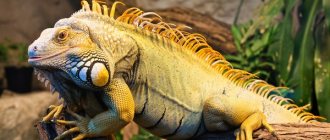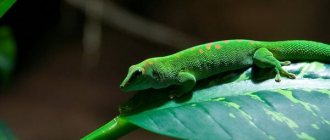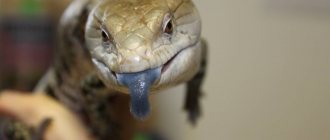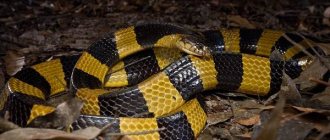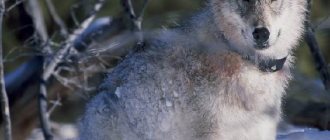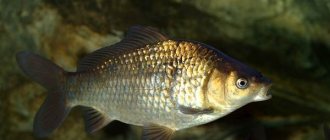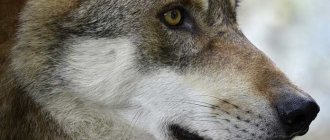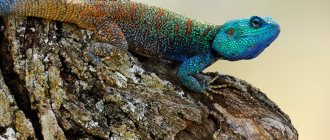- Difference from snakes
Lizards or lizards are very ancient representatives of the earth's fauna, since they existed in the distant times of the widespread dominance of dinosaurs. What can I say, the word “dinosaur” itself is translated from Latin as “big lizard”, although large lizards, dinosaurs, have disappeared from the face of the Earth forever, while their small relatives, ordinary lizards, continue to inhabit our planet. What are the habits of these ancient reptiles - lizards, where do they live, what do they eat, read about all this further.
Description, structure, characteristics
Usually all reptiles with legs are considered lizards, but they also include several without legs. There are a lot of species of lizards; according to zoologists, more than 6,000 different species of lizards live on our planet, and all of them, of course, differ in their habits, appearance, color and habitat. Some of the particularly exotic species of lizards are currently on the verge of extinction and for this reason are listed as
Red Book.
The most common real lizard has a body length of 10-40 cm. The lizard's body is long, elastic, elongated and has a long tail.
Unlike their snake relatives, lizards have movable and divided eyelids. The lizard's paws are of medium length, have claws and are generally proportional to its body covered with keratinized scales. The lizard's skin peels off during molting a couple of times per season; in some languages of the world, this amazing feature of these reptiles to change their skin even gave them their name. In particular, in our language the word “lizard” comes from the Old Russian word “skora”, which means “skin”, or “skin” if more literary.
The lizard's tongue, depending on the species, has a different shape and size; in general, it is mobile and easily protrudes from the mouth. And some lizards even use their tongues to catch fish.
Lizards' teeth are also their weapons; with their help, they capture and grind food, and monitor lizards have sharp teeth that literally cut prey. There is also a single poisonous representative among lizards, named accordingly - the poisonous tooth, which, with a bite like snakes, injects poison into its victim, thus killing it.
The skin of a lizard can have a variety of colors and patterns, depending on the species.
The color (color) of the lizard also differs, which many species are able to change depending on the situation, sometimes literally merging with the surrounding area - color mimicry is one of their main means of defense. Typically, lizards have a combination of gray, brown and green colors.
Wild reptiles
Among the lizards living in the wild are:
Fast lizard
The fast lizard comes in gray, green and brown colors and can throw off its tail. Small animals are very dexterous and quick, and can eat their own offspring.
Proboscis anole
The proboscis anole is a rare species of nocturnal lizard that resembles a crocodile due to its long, elephant-like nose. Reptiles are light green or brown-green in color.
Worm-like lizard
Worm-shaped lizard - a reptile similar to an earthworm; there are no limbs on the animal’s body. It crawls along the ground, its eyes hidden under the skin.
Komodo dragon
The Komodo dragon is the largest reptile, reaching a mass of 60 kg and a length of 2.5 meters. The lizard's bite is poisonous and can lead to dire consequences.
Tree agama
The tree agama is a lizard that climbs trees thanks to its sharp claws and tenacious paws. The body of reptiles is gray or olive in color, the tail is yellow-gray.
Gecko currents
The current gecko is a lizard with a strong body that is covered with gray and blue scales. Individuals grow up to 30 cm, feed on insects and small vertebrate animals.
Ring-tailed iguana
Ring-tailed iguana - features of the lizard are a long tail, light scales with dark stripes, thick scales on the face that resemble horns.
Other notable lizard species include the marine iguana, Arizona adobe, lobe-tailed gecko, spindle-tailed skink and monkey-tailed skink.
Difference from snakes
Those types of lizards that do not have legs are almost the same in appearance as snakes. Such lizards include, for example, the copperhead, which many take for a snake, although in fact it is a lizard that simply does not have legs. But how can one distinguish such a legless lizard from real snakes?
Sense organs
The eyes of reptiles, depending on the species, differ in a greater or lesser degree of development: all diurnal lizards have large eyes, while burrowing species are small, degenerate and covered with scales. Many people have a movable scaly eyelid (lower), sometimes with a transparent “window” occupying a large area of the eyelid, which grows to the upper edge of the eye (which is why it sees as if through glass).
This is interesting! Some geckos, skinks and other lizards have such “glasses”, whose unblinking gaze resembles that of a snake. Reptiles with movable eyelids have a third eyelid, a nictitating membrane that looks like a transparent film that moves from side to side.
Those lizards that have openings in the external auditory canals with eardrums catch sound waves with a frequency of 400–1500 Hz . The rest, with non-working (clogged with scales or completely disappeared) auditory openings perceive sounds worse than their “eared” relatives.
A key role in the life of lizards is played by the Jacobson organ, located in the front part of the palate and consisting of 2 chambers connected to the oral cavity by a pair of holes. The Jacobson organ identifies the composition of a substance that enters the mouth or is in the air. The mediator is the protruding tongue, the tip of which the reptile moves towards the Jacobson's organ, designed to determine the proximity of food or danger. The lizard's reaction depends entirely on the verdict rendered by the Jacobson organ.
Difference from newts
Also, sometimes lizards are confused with newts, and, of course, they have a lot in common: similar structure of paws and body, snake-like head, long rounded tail, movable eyelids and much more. But there are still a number of differences between it:
- The most important difference is the different structure of the skin; if lizards have scaly skin, then in newts it is completely smooth and slimy to the touch.
- Newts do not know how to throw off their tail, while lizards easily and simply get rid of this part of their body in case of danger.
- Lizards have a hard and ossified skull, while newts have a cartilaginous skull.
- While lizards breathe exclusively through their lungs, newts are able to breathe through both their lungs and gills, and even through their skin.
- If lizards reproduce by laying eggs, then newts conduct their reproduction process like fish - in water and through spawning.
Suborder Iguanaiformes
No other group of squamates can boast such a variety of life forms as iguanas. Like the geckoformes, this suborder is not universally recognized. It has 10 families: collared iguanas, anoles, helmet lizards, chameleons, spiny-tailed iguanas and others. All iguanas are divided into two types of individuals, which differ in their characteristic shape and body structure. In arboreal iguanas, the body is laterally compressed, while in terrestrial iguanas, the body has a disc-flattened shape.
The calling card of all iguanas are pleurodont teeth, which are attached to the inside of the jaws. The head of individuals is covered with multiple irregularly shaped scutes, and the back is covered with scales, transformed in places into horny spines, tubercles and teeth.
Iguanas are mostly carnivores that feed on spiders, insects and worms. Larger individuals take vertebrates as prey, most often lizards.
Lizard tail. How does a lizard cast its tail?
One of the most amazing and unique features of the lizard is, of course, its ability to throw away its tail in emergency situations, or autotonia as this phenomenon is scientifically called. How does this happen? Contraction of the lizard's tail muscles allows it to break the cartilaginous formations of the vertebrae and thus throw off most of the tail. In this case, the blood vessels are greatly narrowed, and there is practically no blood loss during this procedure. The discarded tail continues to wriggle for some time, thereby distracting the enemy, and the lizard manages to hide during this time. Over time, the lizard's tail grows back, albeit in a somewhat shortened form.
An interesting fact: it also happens that after autotonia, a lizard grows not one, but two or even three tails.
Links[edit]
*Daniels, J. C. (2002). Book of Indian Reptiles and Amphibians
. Mumbai: Bombay Natural History Society/Oxford University Press.
- Smith, Malcolm A. (1935). Fauna of British India, including Ceylon and Burma.
Reptiles and amphibians. Vol. II.—Sauria. London: Secretary of State for India in Council. (Taylor and Francis, printers). xiii + 440 pp. + plate I + 2 maps. - Smith, Malcolm A. (1943). Fauna of British India, Ceylon and Burma, including the entire Indochinese subregion.
Reptiles and amphibians. Vol. III. - Snakes. London: Secretary of State for India. (Taylor and Francis, printers). xii + 583 pp.
How to distinguish a male from a female?
Male and female lizards look almost the same, although there are a number of signs by which the sex of the lizard can be determined.
- In some species of lizards, such as basilisks and greens
iguanas, males have a bright crest on their back.
In general, all methods for determining the sex of a lizard are not perfect, and you can find out for sure whether it is a boy or a girl only through a testosterone test of the lizard’s blood done in a professional veterinary clinic.
Habitats
Where do lizards live? Lizards live on all continents, with the exception, of course, of Antarctica. In general, they love warm climates and can be found in forests, meadows, steppes, and deserts in any part of the world. They move well on any surface and cling tightly to them with their paws.
Interesting fact: rock lizards are excellent jumpers; the height of their jumps can sometimes reach up to 4 meters.
Nutrition
What do lizards eat in the wild? Lizards are omnivores; after all, they are predators and their diet directly depends on the type and size of a particular lizard. Small lizards eat various insects: butterflies, grasshoppers, locusts, snails, and various worms. Larger lizards, for example, monitor lizards, hunt various small animals: frogs, snakes, mice, and do not mind eating bird eggs. And the largest lizards, monitor lizards from Komoda Island, even attack wild boars, buffalos and deer.
Lizards first sneak up on their prey unnoticed, then make a swift dash and overtake it with their claws and sharp teeth.
Since lizards are omnivores, they can also eat vegetarian food - plant pollen, ripe fruits, tree leaves. There are species of lizards that lead a completely vegetarian lifestyle, but most lizards still like to eat meat.
Lifestyle, behavior
Lizards primarily lead a terrestrial lifestyle; they can burrow into the sand (roundheads), crawl onto bushes/trees and even live there, from time to time embarking on gliding flights. Geckos (not all) and agamas easily move along steep surfaces and often inhabit rocks.
Some species with an elongated body and the absence of eyes have adapted to existence in the soil, others, for example, the sea lizard, love water, so they live on the coasts and often refresh themselves in the sea.
Some reptiles are active during daylight hours, while others (usually with a slit-like pupil) are active at dusk and at night. Some people can change their color/brightness due to the dispersion or concentration of pigment in melanophores, special skin cells.
This is interesting! Many lizards have retained the parietal “third eye”, inherited from their ancestors: it is not capable of perceiving form, but distinguishes between darkness and light. The eye on the crown is sensitive to ultraviolet radiation and regulates hours of sun exposure and other forms of behavior.
Contrary to popular belief that most lizards are poisonous, only two closely related reptiles from the family of lizards have this ability - the escorpion (Heloderma horridum), which lives in Mexico, and the vest (Heloderma suspectum), which inhabits the southwestern United States. All lizards molt from time to time, renewing the outer layer of skin.
Enemies in nature
But the lizards themselves in natural conditions have many enemies, among them there are their closest relatives, for example, the same monitor lizards happily eat other small lizards. They are attacked by birds of prey (owls, eagles, hawks), predatory animals: foxes, bears, wolves, martens, and sometimes even cats. Snakes also pose a great threat to many lizards.
Cited links[edit]
- ^ ab Smith, Malcolm A. (1931). Fauna of British India, Ceylon and Burma.
Vol. I. - Loricata, Testudines. London: Secretary of State for India in Council. (Taylor and Francis, printers). xxviii + 185 pp. + Tables I-II. ("Skin", p. 30). - ^ a b c Boulenger, Georgia (1890). Fauna of British India, including Ceylon and Burma.
Reptiles and Batrachia . London: London: Secretary of State for India in Council. (Taylor and Francis, printers). - ^ abc Are snakes slippery? to Associate Professor at the Singapore Zoological Gardens. Accessed 14 August 2006
- ZooPax Scales Part 3
- ^ab General Snake Information - South Dakota Division of Wildlife. Archived November 25, 2007, at the Wayback Machine.
Types, photos and names
Zoologists divided the entire variety of species of lizards into 6 information orders consisting of 37 families.
Infosquad back-shaped
These include the following families:
- true lizards living in Eurasia, Africa and the USA,
- night lizards inhabiting Cuba and Central America,
- Gerrosaurs - “residents” of the Sahara and about. Madagascar,
- skinks - live everywhere, mainly in the tropics,
- Teiids - live in South and Central America,
- belted tails - live south of the Sahara and Madagascar,
- gymnophthalmids - distributed from southern Central America to southern South America.
Infoorder Iguanaiformes
This includes 14 families, the most interesting representative of this order is the African chameleon, capable of changing its colors.
Infraorder gecko-like
Consists of 7 families. In particular, it includes the legless lizards lizards that live in Australia and some islands of Oceania.
Infraorder vermiform lizards
Consists of one family of worm-like lizards and two genera. Living in the tropical forests of Asia and Central America, these worm-like lizards resemble earthworms in appearance.
Infraorder monitor lizards
This includes the largest representatives of lizards - monitor lizards, which are also divided into several families. Monitor lizards live in many parts of Africa, Asia, Australia, as well as New Guinea and many islands of Oceania.
Paleontological history.
The oldest fossil remains of lizards date back to the Late Jurassic (ca. 160 million years ago). Some of their extinct species were enormous in size. It is believed that Megalania, which lived in Australia in the Pleistocene (approx. 1 million years ago), reached a length of approx. 6 m; and the largest of the mosasaurs (a fossil family of long, slender fish-like aquatic lizards related to monitor lizards) is 11.5 m. Mosasaurs inhabited the coastal sea waters of various parts of the planet for ca. 85 million years ago. The closest modern relative of lizards and snakes is the rather large tuatara, or tuatara, from New Zealand.
The Komodo dragon is the largest lizard in the world
And the most dangerous. The Komodo dragon, the largest of all existing lizards in the world, deserves special mention. Komodo dragons live in Indonesia on the island of Komodo and amaze with their incredible size - the Komodo dragon is up to 3 meters long, weighing 80-85 kg. It is not surprising that these giant lizards sometimes even attack cattle.
The Komodo dragon poses considerable danger, including to humans - several cases of attacks by these monitor lizards on people have been recorded, resulting in death for the latter.
Reproduction
The mating season for lizards occurs in the spring or early summer. Large lizards breed once a year, smaller ones several times per season. If several males claim one female, then the largest of them gets it. Smaller male lizards prefer not to engage in combat with a strong opponent. However, if the size of the contenders is equal, then a fight breaks out between them, during which the males violently bite each other. As a result, the female goes to the stronger winner.
Some time after fertilization, the pregnant female lays eggs; small lizards lay up to 4 eggs at a time, while larger ones can lay up to 18 eggs at a time. The sizes of the eggs also vary, for example, in the small round-toed gecko the egg size does not exceed a few millimeters in length, while in the Komodo dragon the egg length is 10 cm.
Caring mother lizards bury their clutches underground or hide them in various secluded places, caves, and burrows. The incubation period for lizard eggs lasts from 3 weeks to 1.5 months, after which period small lizards are born, which immediately begin an independent life.
Arizona venomtooth
Arizona Venom Tooth
This lizard is considered the most poisonous in the world . It has curved teeth that inject poison into the body of the victim, and the released dose of poison is more than enough even for a bull. The jaw apparatus of this lizard is designed differently from that of snakes - all its teeth are poisonous, and not just the front ones, since all are moistened with poison. Of course, small lizards do not feed on large warm-blooded animals; chicks, snakes, and rodents become their daily food. She bites only in self-defense.
The Venomtooth is a desert dweller who loves sand and stones and often lives near streams in desert areas. There are two types of venom teeth, both of which are dangerous to humans.
What to feed at home?
And many exotic species of lizards are very popular terrarium animals, among them the Yemen chameleon, bearded agama, true iguana and others. With proper care, lizards reproduce well and feel at ease. But if you decide to get a pet lizard, then you will be faced with the question of how to properly feed such an exotic pet.
Fortunately, the lizard is not whimsical in terms of food intake; in the warm season it needs to be fed three times a day, and in winter, due to the low activity of the lizard itself, it can be fed only twice a day. Well, mealworms, grasshoppers, spiders, fresh chicken eggs and pieces of raw meat are suitable food for the lizard. They say that lizards are very fond of a mixture of chopped boiled chicken, grated carrots and lettuce. It is also very important that the lizard always has fresh drinking water in its terrarium.
Interesting Facts
- Basilisk lizards are able to move on water. And this is not a biblical miracle, but a physical law of nature; movement through the water is achieved by quickly and very often moving the lizard’s hind limbs.
- Lizards, like many other animals, are color blind, but unlike many of them, who see the world around them in black and white, lizards look at it through orange glasses in the most literal sense - they see the whole world as different shades of orange.
- Colombian gourmets consider the eggs of some lizards to be the greatest delicacy. There they even specially catch pregnant female monitor lizards and iguanas, cut their belly, take out the eggs, rub wood ash into the wound itself, after which the female is released, and the eggs end up on the dinner table.
Video
Author: Pavel Chaika, editor-in-chief of Poznavaika magazine
When writing the article, I tried to make it as interesting, useful and high-quality as possible. I would be grateful for any feedback and constructive criticism in the form of comments on the article. You can also write your wish/question/suggestion to my email [email protected] or Facebook, with respect, the author.
Author page
This article is available in English - Lizard.
№5
Many species (with the exception of chameleons and monitor lizards) can independently cause tail autotomy (in other words, shed it). They deliberately lose their tail in order to distract a predator or escape from its mouth/paws if it grabs its tail. After autotomy, their tail grows back, but it is no longer a full-fledged tail. The new tail will have no vertebrae. They will be replaced by a cartilage rod. Also, the new tail will be shorter and thinner.

